Basel’s Antikenmuseum is exhibiting unique Greek treasures whose discovery owes a lot to Swiss archaeologists.
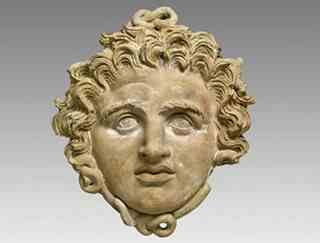 Swiss archaeologists have been in Eretria since 1946, when the co-founder of the Antikenmuseum Basel und Sammlung Ludwig was first involved in the excavations at the Ancient Greek city of Eretria.
Swiss archaeologists have been in Eretria since 1946, when the co-founder of the Antikenmuseum Basel und Sammlung Ludwig was first involved in the excavations at the Ancient Greek city of Eretria.
Eretria was an International centre where the Greeks developed their alphabet. It was recently shown to be the birthplace of the myth of Narcissus.
The exhibition Cité sous terre (Underground city) presents stunning objects in a setting composed of real-size images allowing you, for instance, to walk on “real” Eretrian soil without dirtying your shoes or step on a fourth century BC mosaic with a clear conscience.
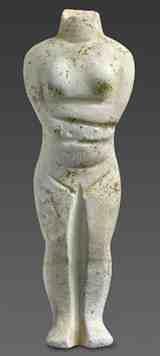 Archaeologists have established that Eretria was a real centre linking East and West.
Archaeologists have established that Eretria was a real centre linking East and West.
The city had commercial relations with towns all around it: objects of Aegean, oriental and even Egyptian provenance were found in the city and testify to the central position of Eretria.
Written language
The first Greek inscriptions can be found on pottery and other artefacts from the ancient city, a powerful and prosperous centre of trade mentioned by Homer in the Iliad.
“In the ninth to eighth centuries BC, Eretria is more important than Athens,” Andrea Bignasca, vice-president of the museum in Basel, told swissinfo.ch.
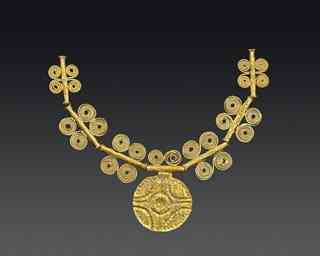 The Eretrians had a trading post in Syria, where they came into contact with the Phoenicians, who had their own script already.
The Eretrians had a trading post in Syria, where they came into contact with the Phoenicians, who had their own script already.
Around the eighth century, the Eretrians took this alphabet and, introducing vowels, adapted it to Greek, which, till then, had never been written.
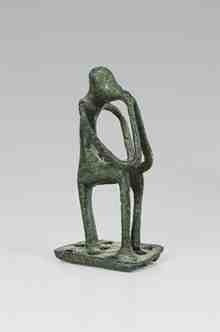 A simple inscription on a jug exhibited in Basel and dated 735-700 BC, “I belong to Lebes”, carries the secret of the birth of the Greek alphabet: it is written right-to-left, just like Phoenician.
A simple inscription on a jug exhibited in Basel and dated 735-700 BC, “I belong to Lebes”, carries the secret of the birth of the Greek alphabet: it is written right-to-left, just like Phoenician.
The change to a left-to-right writing system, as we know it today, was a long process.
Complicating life for the archaeologists, there is a whole period where the alphabet direction changes at every line and the letters themselves change direction with the words.
Phases of prosperity
“Although Eretria is not as well-known as Athens, Sparta or Delos, it had some periods of prosperity,” Karl Reber, the director of the Swiss school of archaeology in Greece, told swissinfo.ch.
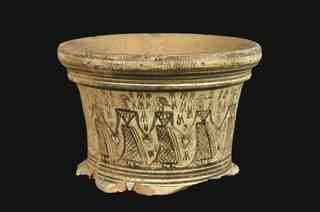 Reber, who is also a professor at Lausanne University, says the town’s first phase of prosperity was in the eighth century BC, when Greek cities started to emerge.
Reber, who is also a professor at Lausanne University, says the town’s first phase of prosperity was in the eighth century BC, when Greek cities started to emerge.
Eretrians were among the first to build Greek colonies in Italy and Sicily. Although the town was under the influence of Athens, which controlled most cities in the fifth century BC, it freed itself from its control, and by the fourth century had become very important and rich.
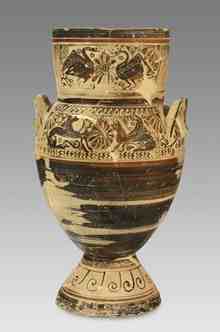 Big public buildings such as a theatre, a gymnasium and big villas decorated with mosaics show just how prosperous the town was. Even under Roman occupation, the town remained wealthy.
Big public buildings such as a theatre, a gymnasium and big villas decorated with mosaics show just how prosperous the town was. Even under Roman occupation, the town remained wealthy.
“We always thought that with the arrival of the Romans, Eretria was starting to decline, but this year we found what we believe to be Roman baths, which are always a sign of prosperity.”
The main temple was dedicated to Apollo and was first constructed in the eighth century BC.
 The exhibition shows a model of the first temple (eighth century BC), which looks like a hut rather than a temple. It is thought to be the first Greek temple constructed within a town.
The exhibition shows a model of the first temple (eighth century BC), which looks like a hut rather than a temple. It is thought to be the first Greek temple constructed within a town.
Decline and posterity
The town became less important around the fourth-fifth century AD. “One of the possible causes of the decline, says Reber, is that at the East of the town swamps appeared and brought malaria epidemics.”
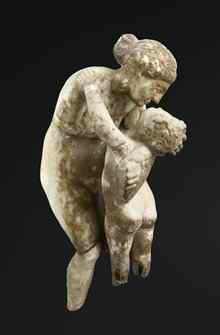 “People left the area because of the bad climate. It is only in the 1940s-50s that we started killing mosquitoes with DDT and other poisons.”
“People left the area because of the bad climate. It is only in the 1940s-50s that we started killing mosquitoes with DDT and other poisons.”
But destroying mosquitoes prompted Greeks from Athens to come to Eretria for their holidays, resulting in the construction of new buildings and the risk of damage to historical remains.
 It was at this point in the 20th century that the Swiss archaeologists’ help was required by local archaeologists. Their work has paid off and discoveries are still being made.
It was at this point in the 20th century that the Swiss archaeologists’ help was required by local archaeologists. Their work has paid off and discoveries are still being made.
The town is also emerging from obscurity. A book by a Swiss archaeologist placing the origins of the myths of Narcissus in Eretria has just been published.
In “The homeland of Narcissus”, Neuchâtel University professor Denis Knoepfler retraces the origins of the young hunter who fell in love with himself and his place in the city, linking the ruins to the eternal myth.
Author: Emily Wright | Source: Swissinfo [October 06, 2010]